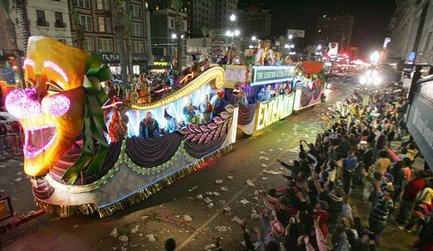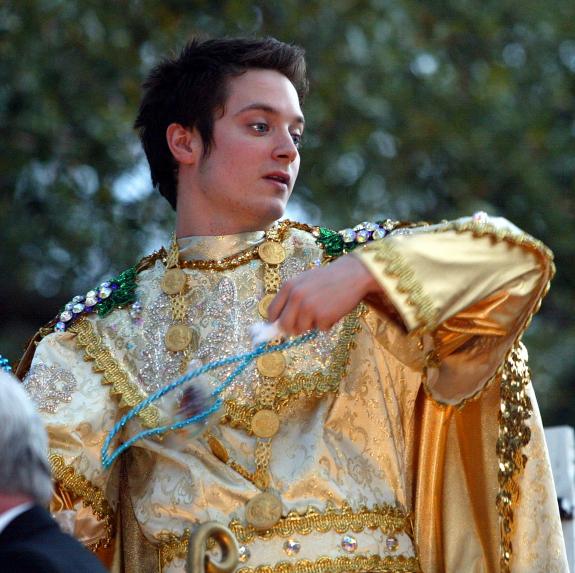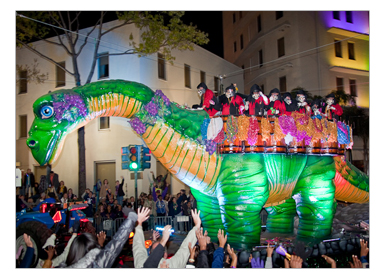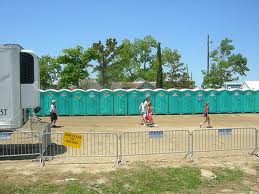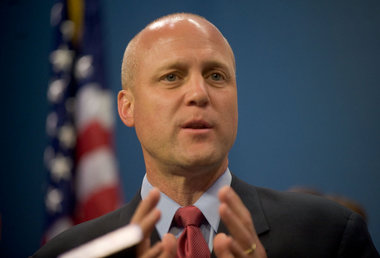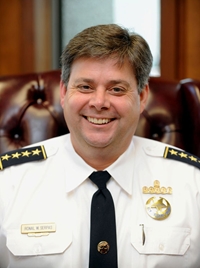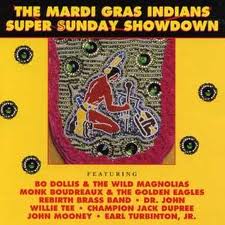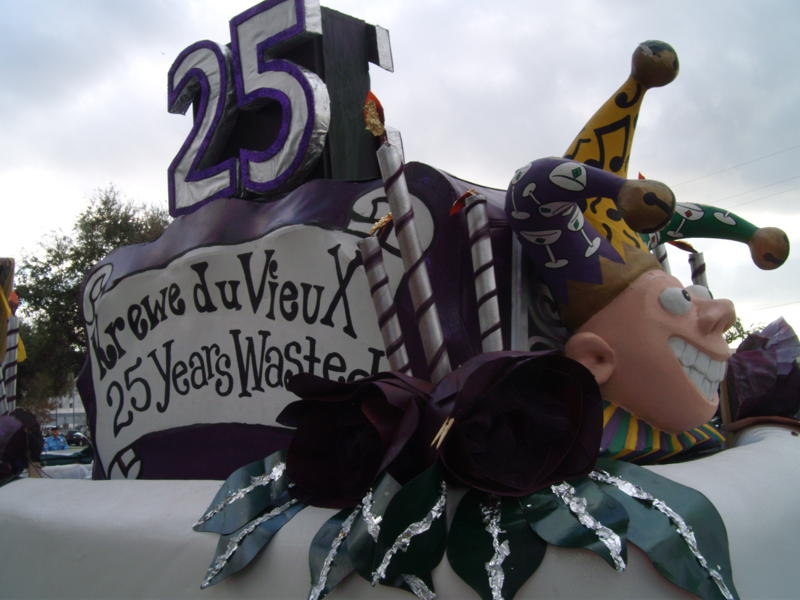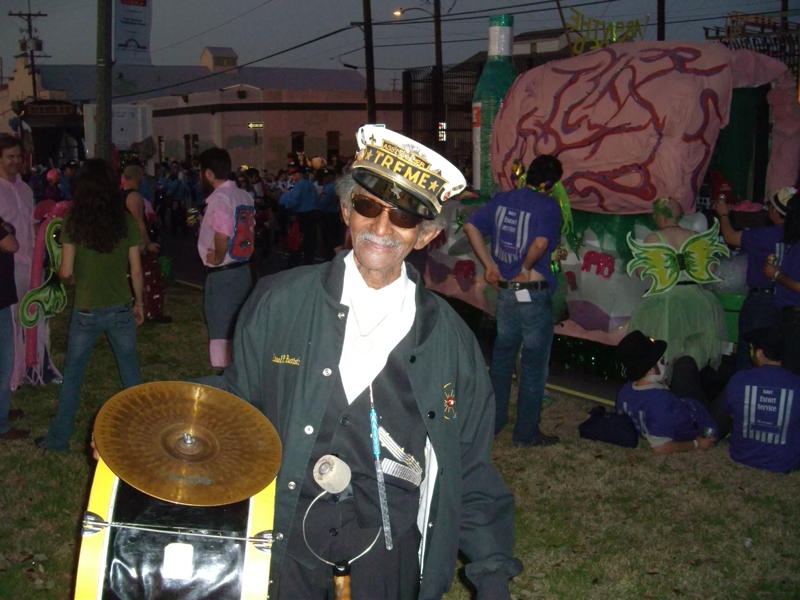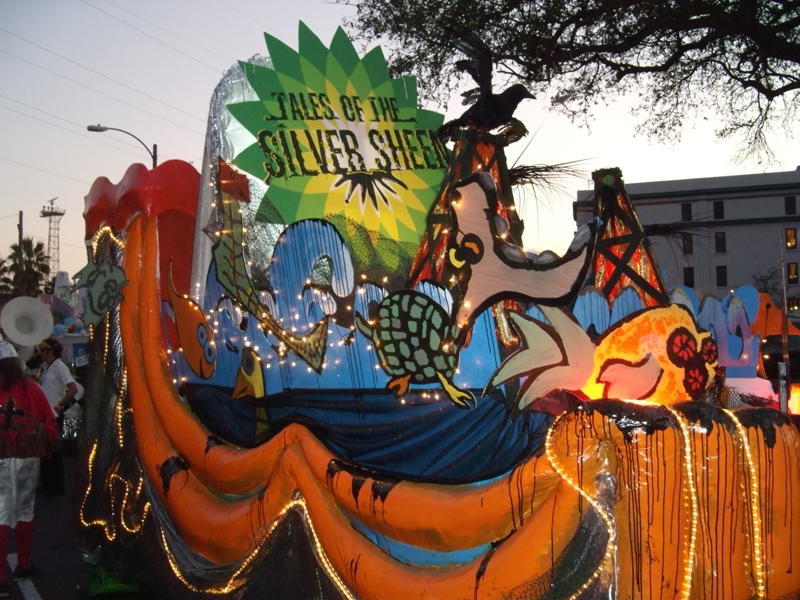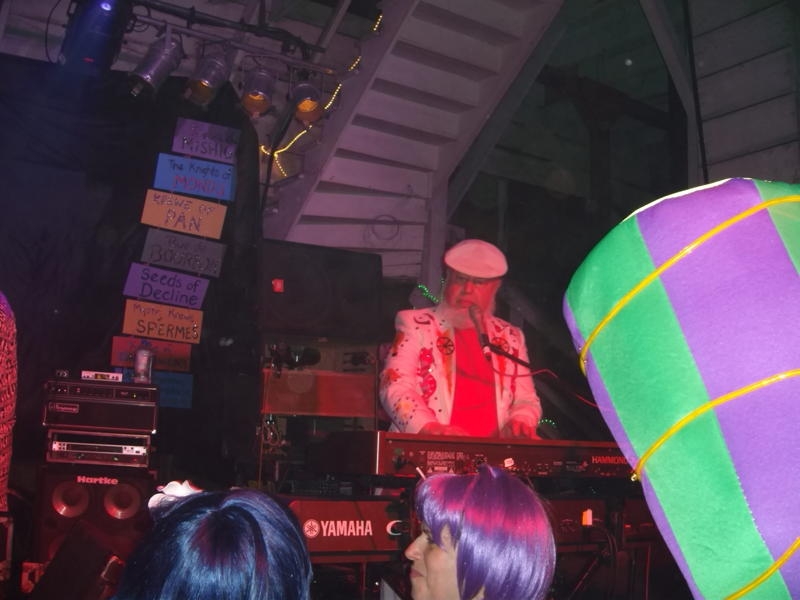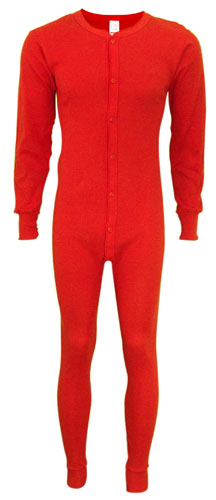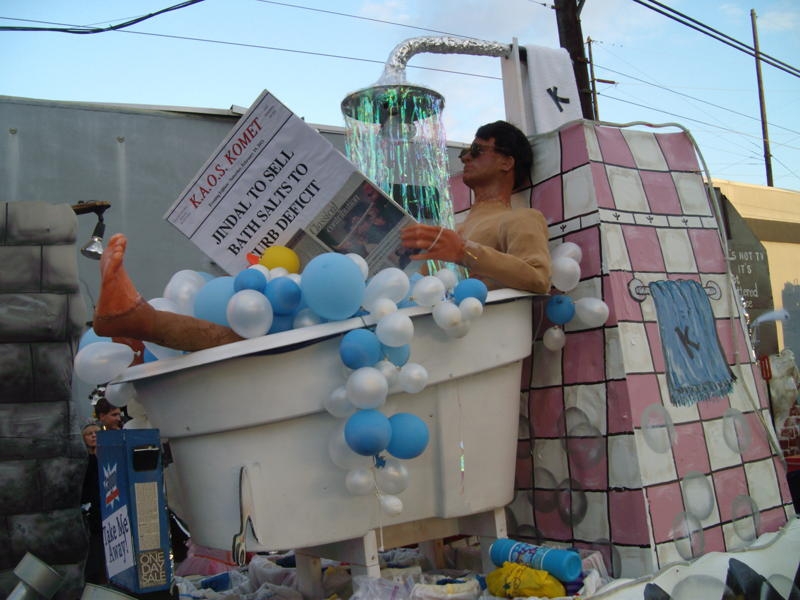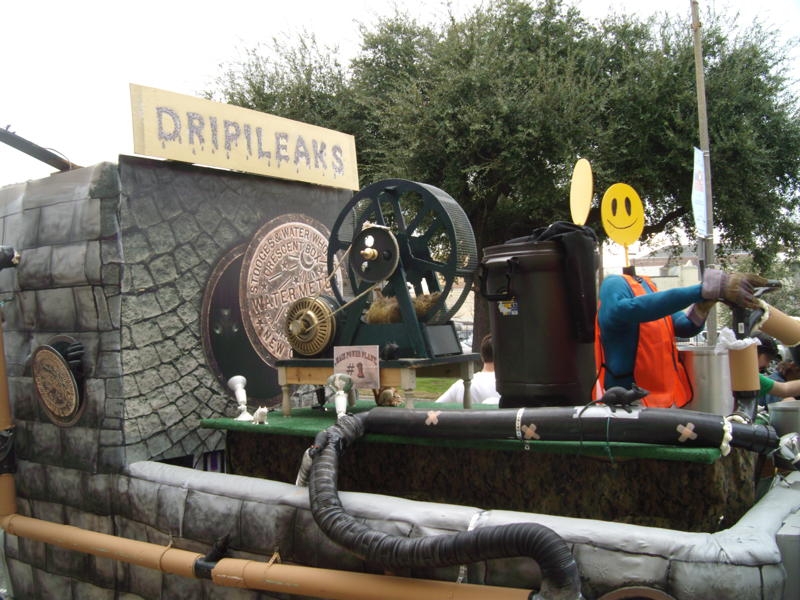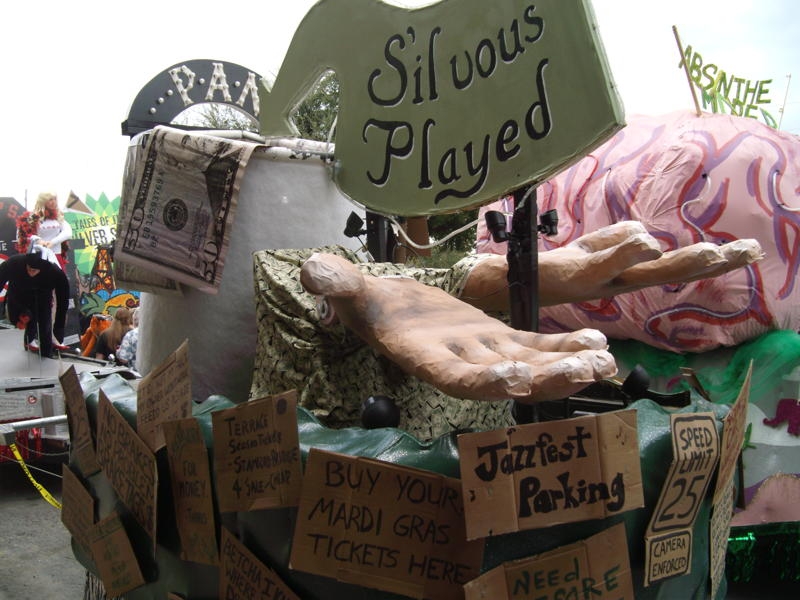Carnival New Orleans
LONGEST PARADE DAY IN MANY YEARS BEGINS!!
0I’m hosted by icorp.net, and they have an historic Mardi Gras site at carnivalneworleans.com, and have an old web cam in the French Quarter:
Web cam on Bourbon St. located at Tropical Isle!!
5:22 & Bacchus is nowhere in sight. WDSU’s Parade tracker is still messaging me about Thoth. Time flies when you have 5 parades in a row, including two very very large Super Krewes ending up the whole shebang! 5:36, Bacchus is rolling, according to WDSU-TV’s parade tracker service.
Endymion gave up its beloved Canal Boulevard route for the traditional St. Charles Avenue. They will follow Bacchus for a very long day of parading, starting with Okeanos, Mid-City, & Thoth! Thoth runs a long route, and takes over 3 hours to run. If Bacchus starts roughly at 3 pm, Endymion can begin at Bacchus’ old time of 5 pm. Then the night wouldn’t run by very much, if things go smoothly, which they probably won’t. Without being unduly pessimistic, the parading night with probably run into the wee wee hours of the night!!
This is the 2nd time since Katrina (2005) that Endymion has changed routes and it’s not very popular with the legions of Mid City Endymion fans that LOVE the 1 major parade that doesn’t go down St. Charles Avenue! Plus, a ton of businesses count on the Endymion business boost their business through the roof temporarily.
Okeanos has begun, as has Mid-City. Thoth will follow, then Bacchus and Endymion. The longest parade day in recent history is underway!
Endymion is arguably the largest krewe in the whole New Orleans Mardi Gras, and to roll last after Okeanos, Mid-City, Thoth, then Bacchus before starting must have been quite a blow of weather reality to swallow. As it’s pouring at 1:30 pm a few hours before Endymion was supposed to roll, it looks like the move to skip a day was wise. Only tomorrow will tell, but from today’s downpour, it looks wise indeed.
PORT-O-LETS ALL OVER NAPOLEAN AVE. NEUTRAL GROUNDS
0You never saw so many groups of a dozen or more, all with big labels, CITY OF NEW ORLEANS, and at least 3-4 groups of toilets between St. Charles Avenue and Annunciation Avenue. Big change and very welcome! Thanks to the City of NOLA, the Mayor of NOLA, the City Council of NOLA, and sanitation of NOLA.
No private Port-o-lets were removed along Napoleon Avenue as of 9:30 pm on Saturday, March 5.
CITY TO REMOVE PORTABLE TOILETS FROM NEUTRAL GROUNDS!!!
0Saw the mayor, police chief, etc. talking on TV tonight about the removal of all port-0-lets from the neutral grounds that are around the St. Charles Avenue, Napoleon Avenue, and Canal Street for Endymion.
This is no new tradition. Many of the families around the parade routes have been paying for their own Port-o-Potties for decades!! Whole families and groups depend for decades on this relatively unobtrusive, since they appear and vanish within 10 or less days without fail.
I do not think the Mayor or Police Chief are using the right logic in carrying out this decision without any public opinion sought. I wouldn’t be surprised if the City Council revisits this ban very quickly.
What’s the deal here? Has the city been paying for the Port -o- Lets on the neutral grounds? The answer is NO NO NO!! So what is really behind this decision?
OTHER OPTIONS FOR BATHROOMS ON THE NEUTRAL GROUNDS ON NEW ORLEANS DURING PARADE TIME
Right Aid at St. Charles and Louisiana Avenues have a dozen port-0-lots available. They are free for cutomers, and $2 for everyone else, and the money aids the New Orleans Musicians Clinic!
My group usually hang out on Napoleon Avenue around Coliseum Street. Sophie Gumbel School offers clean bathrooms very cheaply. The fees benefit the school. $5. per day per person as many times as you like. $2. for single usage. A great deal!!
Mardi Gras Music Series- BO DOLLIS & THE WILD MAGNOLIAS
3Bo Dollis, Sr. has 1 of the greatest, most expressive voices in all the Mardi Gras Indian Kingdom. He has recorded 1 of the top Mardi Gras albums of all time, and has recorded some of the most famous Mardi Gras tunes in Carnival history. I met Bo Dollis,Sr. with my client and good friend, June Victory. Bo was sitting on his little scooter, which helps him get around. Bo’s wife runs a salon in Mid City where they give haircuts, etc. Bo hangs around there.
Listen to Handa Wanda Parts 1 & 2 by the Wild Magnolias
Handa Wanda, Pt. 1
Some of the below bio is from wildmagnolias.net
Theodore Emile “Bo” Dollis was born in New Orleans in 1944. His father was from Baton Rouge, and his mother came from a French-speaking Creole family in St. Martinville, Louisiana. Bo grew up in the central city, an old, run-down commercial-residential uptown neighborhood behind the grand St. Charles Avenue mansions. He was first attracted to the African-Caribbean-American tradition of Carnival Indians while still a youngster.
Bo’s career as a performer and his development as one of the classic singers in the history of the New Orleans recording began when, as a junior in high school, he secretly started attending Sunday night Indian “practice” in a friend’s back yard. He followed The White Eagles tribe, playing and singing the traditional repertoire. In 1957 he masked for the first time with The Golden Arrows, not telling his family of his involvement with the Indians. He made his suit at someone else’s house and told his folks he was going to a parade. Hours later his father discovered him, having recognized his son in the street, underneath a crown of feathers.
Bo Dollis’ name is virtually synonymous with the Wild Magnolias Mardi Gras Indian Tribe. He is clearly the most popular Indian Chief (chosen in 1964) in New Orleans, with everybody wanting to see him in his hand-crafted suit on Mardi Gras or St. Joseph’s Day. Bo has been a legend almost from the beginning, because he could improvise well and sing with a voice as sweet as Sam Cookie, but rough and streetwise, with an edge that comes from barroom jam sessions and leading hundreds of second-lining dancers through the streets at Carnival time.
In 1974 they released the legendary Wild Magnolias album, backed by a New Orleans all-star band that included Willie Tee, his brother Earl Turbinton, Jr. on saxophone, Snooks Eaglin on guitar and Alfred “Uganda” Roberts on percussion. This band’s performance at the Bottom Line in New York made the Magnolias headline news.
In 1975, Dollis and Monk Boudreaux, Chief of the Golden Eagles, recorded James “Sugarboy” Crawford’s 1954 R&B hit Jackomo, Jackomo. There is contrast in their vocal phrasing, and each swings the story line at a slightly different pace; nonetheless, the unity of spirit shines through. You can hear the closeness of these two childhood friends, the only two professional Chiefs performing in New Orleans. In 1970, they appeared at the first New Orleans Jazz and Heritage Festival. Shortly afterward, they collaborated on the classic Mardi Gras song Handa Wanda. Seldom do they sing together in practice.
The Wild Magnolias and The Golden Eagles have taken Bo Dollis and Monk Boudreaux from the ghettos and brought them to places like Carnegie Hall in New York City, the Smithsonian Folklife Festival in Washington, DC, London, Nice and Berlin. Where ever they go, listeners will hear an authentic music to which New Orleans owes so much.
In the 1980’s, June Victory joined the Wild Magnolias as lead guitarist. On the Mardi Gras Indians Super Sunday Showdown CD (Rounder, 1992), June has 2 arrangements, Oops Upside Your Head & Battlefront. After June Victory left the Magnolias, June Yamagishi took his place.
In January 2009, Bo Dollis received the Best of the Beat Lifetime Achievement Award from OffBeat Magazine. OffBeat contributor John Swenson interviewed Bo about his life and art:
Were your parents music fans?
No.
So did you listen to the radio growing up? Jazz, R&B?
No.
Gospel?
Yeah. I did sing in church. Everybody went to church, my mama and brothers went. It was just singing. I didn’t think anything of it. I would sing with the choir at church. We sang around the house. People would come to hear me sing.
I can’t say it like I wish I could anymore. I sang… what’s his name? Fats Domino! I wanted to be like him. People would say, “He sounds just like Fats Domino.”
You got introduced to the Indians by a neighbor, right?
The Indians were what I was interested in. He was an Indian chief and he was right there where I lived and I used to watch him make an Indian suit. He was with the White Eagles and I used to watch him. He’d give me little pieces and I tried to make one myself. So I made my first Indian suit. I ended up with the Wild Magnolias. I went with the White Eagles but they had a Big Chief and I could only be a Red Indian with them so I left. So I ended up with the Wild Magnolias because there I got a spot. I got with them and I got to be a Flag Boy. I’ve been with them ever since.
You must have been a hell of a Flag Boy because you moved up to Big Chief pretty quickly.
I had a good voice and they wanted me to sing. With the White Eagles I couldn’t sing. See the Indians can’t sing. They can answer, but they can’t sing. We walk down the street and I sing [amazingly, his voice opens up to full strength as he sings a patois that ends with “Down the street here I come”].
You put on a suit. You look good. I was… young. They say they want me to be chief, and some of the people in there were 35, 55. I said, “I don’t wanna be no Big Chief,” and everybody said, “You’re good! You gotta sing. You’re Big Chief.”
I wanted to be the Spy Boy. I was young and I could move around. I wanted to spy out on the other tribes.
Did you start writing songs for the Indians right away?
I would sing, and what you hear Indians sing today is what I was singing then. You don’t hear too many of the new Indians singing the older songs, but it’s more of the stuff that I used to do. They don’t know the words to the songs. They may know the title, but they don’t know the words to the song. They don’t know what they’re doing. They not Mardi Gras Indians they just talkin’… they just crazy.
When you started out, were the old timers then doing different songs or different lyrics to songs?
Maybe one or two guys, but they all sang the same songs.
It was a ritual.
Right. But they don’t have that now. They don’t know that.
So you think some of that ritual is lost.
Oh yeah. All that’s lost. They don’t try. There’s no more Indians
When you were coming up, you were part of a whole generation of young people who were becoming Indians, right?
Yeah. We were young. One time with the Indians you could go from up here to the Treme and back, marching. Now you can’t go from here to up the block because the suits are too big. [laughs] They got to be carried on a cart because the suits are too big for the people, too heavy. It’s pretty…
In the old days you traveled light because you had to cover a lot of distance.
Right. All except the chief, he always had the suit.
Gerard: Back then, the other Indians except the Chief, the Second Chief, the Trail Chief, the Spy Boy and all, they might wear four or five patches. Now they wear 20 patches.
Dollis: Everybody wants to be chief. [laughs]
Gerard: You know that Flag Boy might have a flag in his hand, the Wild Man might be carrying a wooden shotgun, that’s how you tell who they are. The Chief is supposed to have the biggest crown, that’s how you tell who he is. Today you might see some Flag Boy with a bigger crown than the Chief! When I started out, you had five, six patches. Now I’ve been doing it a while so I got 20 patches, but nobody starts with five or six patches now. Now I don’t think anybody want to be an Indian except for the Wild Man.
Was it a difficult decision to record the Mardi Gras Indian music, which was considered a secret ritual up to that time?
No, no, no. I was all for it. I always loved to sing. Quint came to an Indian practice. I didn’t know if I could stay in tune. I never wrote music but I could sing. Whatever the band played, I could sing it. Anywhere you go, I could go. I can’t write music, but I can feel whatever they do.
Gerard: Quint came to an Indian practice, he didn’t know who my dad was. My dad came in and started singing and Quint was like, “Whoa, who’s this voice? We’re going to put you in the studio.” So he just started singing.
This was 1970, which was also the first year of jazz festival.
Yeah. We led the first parade. Me and Monk. I put my suit on and started singing, leading a second line, down Canal Street all through the French Quarter, singing all the way to Congo Square and the people followed along all the way. I was singing. With all the other Indians.
That was the year you opened up Mardi Gras Indian culture to a whole new audience.
Gerard: A lot of people were scared of the Indians back in those days. They heard about all the violence, so they were more scared than anything else.
Dollis: We tell about the days way back they was wild, wild, wild; I mean they was cutting, killing and shooting. The uptown and the downtown would fight. We didn’t want that. So we stopped. Tootie Montana was big on that. He wanted to get it straight because he was beautiful. He looked so good. Then everybody wanted to be… beautiful. So we got all the Indians and all the chiefs to stop the violence.
Gerard: We all just wanted to change it. We fought with pretty suits instead of our hands and knives and guns. Back in the old days we’d fight in the day then at night we’d buy each other drinks in the bar. But when it comes to guns, there’s no buying drinks after the fight. Once the guns come out, you’re either going to jail or you’ll be six feet under.
Dollis: The gangs today, they kind of like looking like those old Indians were with the way they fight and shoot.
Maybe they can stop the violence again like you guys did.
They won’t until they can find somebody to lead them there. They need a chief to take care of it.
Were you close with Tootie Montana?
I was friends with Tootie, but I didn’t see him so much. I would see him at Jazz Fest or Mardi Gras day or Super Sunday. He knew me and I knew him. We both loved what we do.
When you would meet Tootie or another chief on the street during Mardi Gras, you had a ritual exchange. Did you really try to get the upper hand or was everybody cool about it?
The people wanted to see us confront each other and yell and sing or something like that, but we knew each other and what to do. A lot of times it was about your suit and showing that off. I used to try and see the other chief’s suit before he sees me. I used to try and see them before they come out of their house. One time, I went to a house to look and his crown was so big he couldn’t get out his front door! That’s how big some of them got.
After Katrina a lot of the neighborhoods are gone and not as many Mardi Gras Indians are around. Do you think it will ever come back to what it once was?
Since the storm… everybody now… tryin’… it’s only for money. Ain’t nobody….
But surely some of the Indians are keeping it alive.
Yeah, they’re keeping it alive, but nobody knows what they should be doing. What I wanted to do, I wanted somebody to talk to all the Indians, all over the city and write a book. So we could have all that information documented. I got nobody who could do it. ’Cause you can’t even find all the Indians I know about. I could talk to them myself, I know how to talk to them. I wanted the older people to tell about it. I wanted to get that done. But now I can’t… talk.
Krewe du Vieux Rolls in Perfect Weather (?) With Huge Crowds!
0I had more fun last night with my krewe than I’ve had since…I last rolled with my krewe a year ago! I’m an Escort, meaning I play the role of Security Guard for my float, along with several other Escorts. Since KdV rolls through Marigny & the Vieux Carre, the streets are narrow and the huge crowds last night had to be kept off the float for most of the parade.
The weather was wonderful and warm, so unlike any other KdV parade I’ve been associated with or watched. This is always a cold weather parade, since it runs very early in the Carnival Season. What a wonderful, unexpected, delightful change!
Get involved in our big local holiday, and JOIN a krewe and RIDE (or walk)!! It is a big part of New Orleans’ identity, and the feeling is indescribable. I like to interact with the crowd, I high five as many spectators as I can, while screaming, “Happy Mardi Gras to you, & you, & you, etc.” I do this for 10 minutes on, 5 minutes off for the entire 2.5 mile route. As we high five, our eyes meet, and I get a small rush of energy. At the end of the parade, you have aggregated so many interactions with parade goers that you feel high, high on life. The world is a way better place during parades.
KdV has unique, themed throws. Each sub krewe has their own sub krewe throw(s); however, any member can produce a limited edition throw and throw it alone or with fellow krewe members. The krewe throw may be a fly swatter, or sticker, or bumper sticker, dreidel, etc. The type of throw may stay the same, but the contents change. The two krewe-wide throws, the cup and wooden nickel, are used every year but dressed up with the new theme.
The crowd last night seemed very special. I was amazed at the high number of coordinated costumes and big time painted faces in the crowd throughout Marigny and French Quarter. There were more people in very nice costumes with superb make up than I’ve ever seen for KdV. I guess it was all the costume parties along the parade route? Otherwise, I cannot explain this phenomena.
A few words about the truly memorable parading music provided by the Krewe of Underwear band, Egg Yolk Jubilee. Here’s a wonderful 2001 video of EYJ with the Emperor of the Universe himself, Ernie K-Doe!! We used EYJ last year, and they were hired back this year.
The fabulous weather had a big effect on the crowd, more Last night, it was 6o degrees at parade time! While dancing my ass off to the fabulous New Orleans Radiators, I sweated to KdV like never before.
When the Rads started after the Brass Band Jam, the KdV party gained traction and moved up a level. The Rads are on their farewell tour and I feel lucky we had them for our party last night. They didn’t disappoint and showed they are leaving at the top of their game after 35 years and 4,500 concerts! They will be sorely missed.
Didn’t make it past the Rads to the more unbelievable Trixie Minx, as I wore out a bit from 9 hours of fun & parade work. Didn’t drink last night, so it wasn’t the alcohol eventually getting me down.
Before there was KdV, there was its predecessor, Krewe of Clones. Clones grew directly out of the Contemporary Arts Center. The CAC ran the parade, and the parade staging area was the CAC parking lot on Camp Street. It was an arty, satirical parade from the start. I still have an original 1984 Krewe of Clones T shirt with the theme Barbie & Ken go to the World’s Fair.
After watching the parade one year in front of the CAC, we noticed the CAC Parade Marshall was drinking heavily over the couple of hours it took the parade to leave the staging parking lot.
The next year, we hatched a plan to crash the parade with our own float, taking advantage of the Marshall’s inebriation. We decorated our VW van into an elephant float by dying some sheets gray, and constructing a paper mache trunk, ears, and tail.
The night of the parade, we drove our float into position next to the CAC. When the parade was almost out of the staging area, we took advantage of the loose formation conditions, and drove our float straight onto the route. The Parade Marshall waved us on. For the next few years, we morphed that old van into other animals, and continued to crash the parade until the Krewe perished from infighting.
As stated, I’m in the Krewe of Underwear. Here, straight from the Krewe’s of Underwear website is the rest of the story:
The Krewe of Underwear was founded in [the early 1980s] as a sub-krewe of the storied Krewe of Clones. This wild, satirical Carnival parade, which first marched in 1978, was based out of New Orleans’ Contemporary Arts Center.
- Unfortunately, in 1986, infighting among the Krewe/CAC leadership, combined with pressures from the City due to the parade occurring the night before the Super Bowl was to be played in New Orleans, caused the untimely demise of the Krewe of Clones. Not wishing to be denied a good time or any excuse for wild excess, the Krewe of Underwear along with another Clones sub-krewe, the Krewe of Mama Roux, held a “Clone Funeral”. An anatomically correct (and erect) clone was created and placed on a funeral cart, and a short march to a party site was planned.
- At the last minute, the individual most responsible for the entire problem got word of the plans, and called the police on the unauthorized march. Informed by New Orleans’ finest that they could not march in the street, since that would block traffic, the Underwearians and their fellow mourners marched on the sidewalk, while eleven police cars rolled along next to them, blocking the street far more effectively than the marchers ever could have.
- That same year, two other Clones sub-krewes, the Seeds of Decline and the Krewe of C.R.U.D.E., held their own informal march on Mardi Gras itself, in the French Quarter. After Carnival was over that year, the two groups got together, established an official parade date (three Saturdays before Mardi Gras, the old Clones date), and received permission to march in the French Quarter. Thus was born the Krewe du Vieux Carre (the old, French name for the Quarter), now shortened to Krewe du Vieux. The first Captain of Krewe du Vieux was Underwear’s own Craig “Spoons” Johnson.
As a founding sub-krewe of Krewe du Vieux, Underwear is a leader in theme and float creativity, satire, obscenity, and general crazed celebration. Instantly recognizable by the long, red union suits that are the basis of Underwear apparel (not to mention the only underwear ever worn by most krewe members), the Krewe of Underwear takes on political follies, social norms and a large amount of alcohol every year in the best parade in New Orleans, the Krewe du Vieux.
